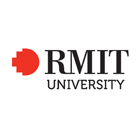Master of Property
Master of Property
RMIT’s Master of Property has been designed to enable you to critically engage with contemporary property theory, apply your knowledge and skills to creatively address industry problems, and to realise business opportunities across the corporate and residential sectors. Our industry connected degree will develop your skills and knowledge within the…
Categories
COURSE DESCRIPTION
RMIT’s Master of Property has been designed to enable you to critically engage with contemporary property theory, apply your knowledge and skills to creatively address industry problems, and to realise business opportunities across the corporate and residential sectors.
Our industry connected degree will develop your skills and knowledge within the domains of:
corporate property asset management
property valuation
property development
property investment feasibility
funds management.
What you will gain through this degree
As a graduate of this degree, you will develop the skills needed to work in high level and senior management roles. You will possess sound knowledge of property as an asset class within local and global contexts and the ability to independently conduct research and analyse industry trends. You will also be equipped to apply your teamwork and management skills to formulate industry solutions, and provide informed, evidence-based decision-making.
Why study a Master of Property at RMIT
Our expert teachers, passionate researchers, connections to industry and strong practical focus means RMIT postgraduates are among the most employable in Australia.
A capstone experience, either through an individual professional practice project or a minor thesis, allows you to integrate your knowledge, connect theory to practice and demonstrate your learning.
Career
You’ll discover employment opportunities across a wide range of activities relating to property investment and property development.
EDUCATIONAL INSTITUTION
Since its establishment in 1887, Royal Melbourne Institute of Technology University (RMIT) has been meeting the needs of the community surrounding it. Originally a Working Men’s College, RMIT showed its flexibility during World War Two, training over 20,000 servicemen in communications to help with the war effort.Now, it is a true pioneer in international education, championing cross-border study opportunities with campuses in various countries. Granted formal university status in 1992, RMIT is ranked 21st in the world for universities that are less than 50 years old.RMIT is the largest higher education institution in Australia, currently with more than 82,000 students. With nearly 20% of those students coming from overseas, it is a university that truly welcomes diversity and is a melting pot of different cultures. RMIT has three campuses in Vietnam, a European hub in Barcelona, an office in Indonesia, and partners with 200+ institutions in 42 countries to provide study opportunities worldwide.
Since its establishment in 1887, Royal Melbourne Institute of Technology University (RMIT) has been meeting the needs of the community surrounding it. Originally a Working Men’s College, RMIT showed its flexibility during World War Two, training over 20,000 servicemen in communications to help with the war effort.
Now, it is a true pioneer in international education, championing cross-border study opportunities with campuses in various countries. Granted formal university status in 1992, RMIT is ranked 21st in the world for universities that are less than 50 years old.
RMIT is the largest higher education institution in Australia, currently with more than 82,000 students. With nearly 20% of those students coming from overseas, it is a university that truly welcomes diversity and is a melting pot of different cultures. RMIT has three campuses in Vietnam, a European hub in Barcelona, an office in Indonesia, and partners with 200+ institutions in 42 countries to provide study opportunities worldwide.




